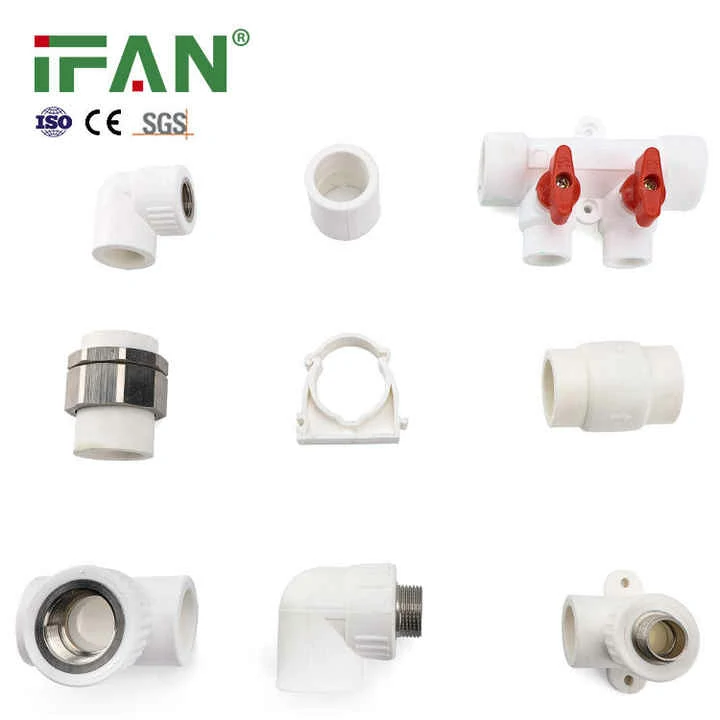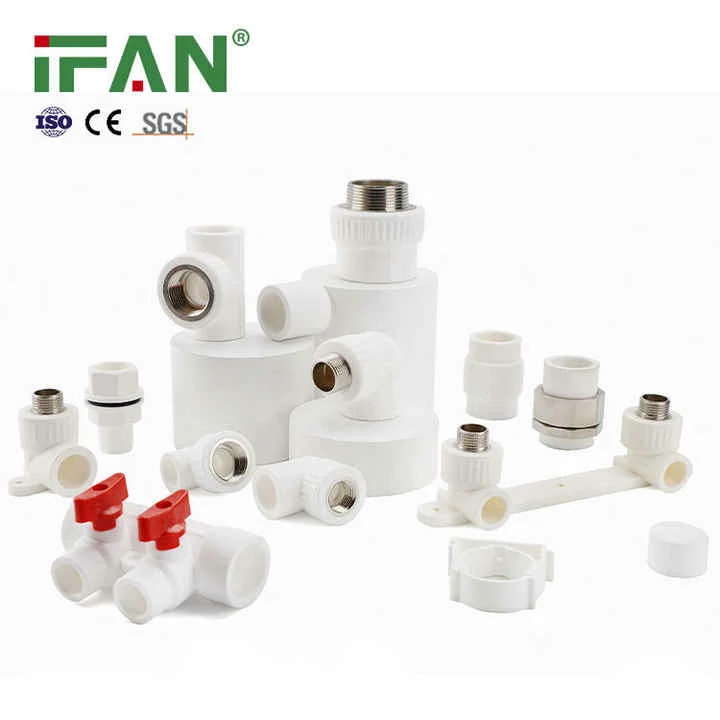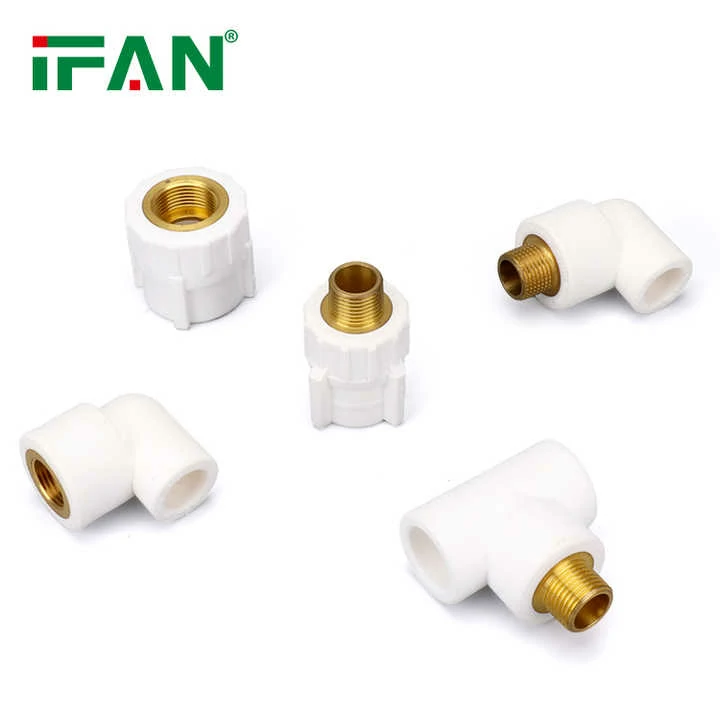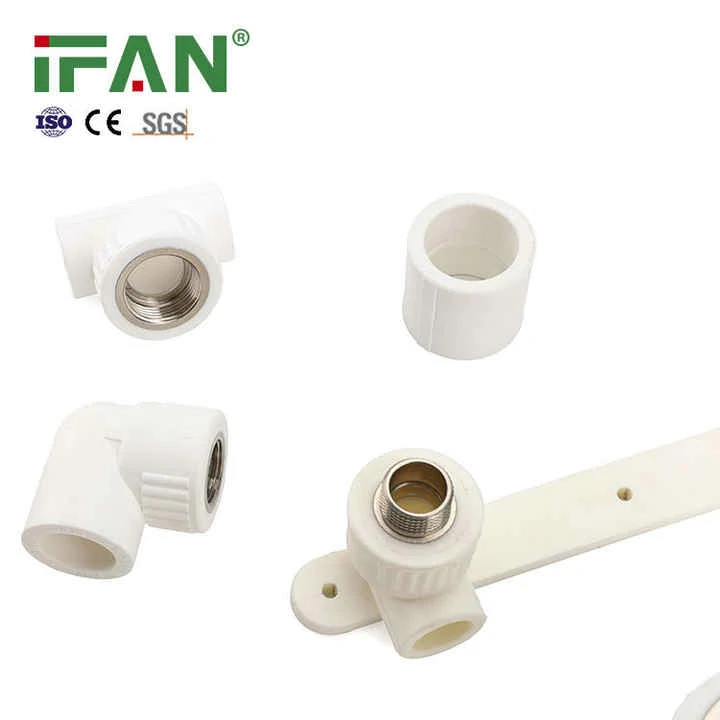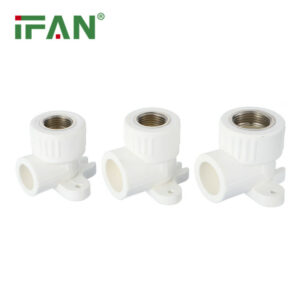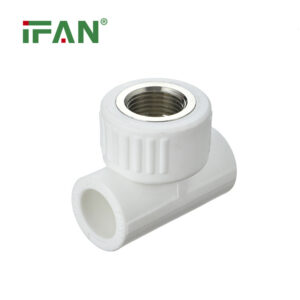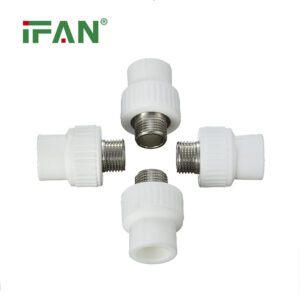IFAN White PPR Pipe Fittings
Category : Click Download
Whatsapp : +86 19884503412
Wechat : 19884503412
Description
Fundamental Principles of PPR Material Protection
PPR (Polypropylene Random Copolymer) pipe fittings require specific handling protocols due to their unique thermoplastic properties. The material’s molecular structure makes it susceptible to deformation under improper conditions, necessitating strict environmental controls. Manufacturers recommend maintaining temperatures between -20°C to +40°C during transit and storage to preserve material integrity. UV radiation presents another critical concern, as prolonged exposure can degrade the polymer chains, reducing the product’s service life by up to 30%. The industry standard DIN 8077/8078 specifies that PPR products should never be stored outdoors without protective covering for more than 48 hours. Special attention must be given to pipe ends and connection surfaces, which require protective caps to prevent contamination from dust, moisture, or mechanical damage that could compromise future welding quality.
Transportation Best Practices for PPR Products
The logistics of moving PPR pipe fittings demand specialized equipment and loading techniques to prevent material stress. Flatbed trucks should utilize properly designed support structures with a maximum overhang of 1.5 meters to avoid bending moments. For international shipping, containers must include desiccant packs to maintain relative humidity below 60%, preventing moisture absorption that could affect thermal fusion performance. Loading patterns should follow these guidelines:
- Stack pipes in alternating directions to distribute weight evenly
- Use nylon straps instead of metal chains to secure loads
- Maintain separation from sharp-edged cargo by at least 50cm
- Limit stacking height to 2 meters for 20mm-63mm diameter pipes
Transport vibration monitoring has shown that road conditions exceeding 5Hz frequency can initiate micro-cracks in PPR materials, suggesting route planning should avoid poorly maintained roads whenever possible.
Warehouse Storage Configuration Requirements
Purpose-built storage facilities for PPR products should incorporate several critical design elements. The flooring system must provide continuous support across the entire pipe length, with rack spacing not exceeding 1.2 meters for standard 4-meter sections. Climate control systems should maintain temperature stability within ±5°C of the target 20°C ambient condition. Modern warehouses employ these organization methods:
- Color-coded zoning for different pressure ratings (PN10, PN16, PN20)
- FIFO (First-In-First-Out) inventory rotation with barcode tracking
- Dedicated quarantine areas for damaged goods inspection
- Anti-static flooring for fittings storage areas
Particular attention must be paid to preventing contact with solvents, oils, or other hydrocarbons that can cause stress cracking. Storage proximity regulations require minimum 3-meter separation from such substances.
Special Handling Procedures for Extreme Conditions
Certain environmental situations require enhanced protective measures for PPR materials. In tropical climates with high humidity, vacuum-sealed packaging with oxygen absorbers extends shelf life by preventing oxidative degradation. For Arctic regions, gradual acclimatization over 72 hours is mandatory before installation when receiving shipments from warmer climates. Documented procedures exist for:
- Winter transportation heating protocols
- Monsoon season moisture barriers
- High-altitude pressure compensation
- Earthquake-prone area stabilization
Research indicates that PPR materials stored at temperatures below -10°C become brittle, requiring special handling equipment with padded grips to prevent microfractures during movement. Thawing should occur naturally at room temperature rather than through artificial heating.
Quality Assurance and Damage Prevention Systems
Implementing comprehensive inspection regimes ensures PPR product integrity throughout the supply chain. Advanced monitoring technologies now include:
- Infrared thermography for detecting storage temperature violations
- Laser profilometry to measure ovality deformation
- Ultrasonic thickness testing for wall integrity
- Spectroscopic analysis of polymer degradation
Standardized checklists should verify:
- Protective end cap presence (100% verification)
- Surface scratch depth (maximum 0.3mm tolerance)
- Straightness deviation (<1mm per meter)
- Color consistency (Delta E <3 on CIELAB scale)
Automated alert systems can notify managers when environmental parameters exceed thresholds, while blockchain-based tracking provides immutable records of handling conditions throughout the product journey from manufacturer to installation site.
Conclusion: Optimizing the PPR Supply Chain
Proper transportation and storage of PPR pipe fittings directly impacts their performance lifespan and installation reliability. By implementing these scientifically-validated protocols, distributors and contractors can ensure material properties remain within design specifications. The industry continues to develop improved solutions, including smart packaging with embedded sensors that monitor and report real-time conditions during transit. These advancements, combined with rigorous staff training programs, are raising quality standards across global PPR supply networks. Future developments may include self-regulating storage containers that automatically adjust internal environments to maintain ideal preservation conditions, further reducing material waste and ensuring optimal performance in plumbing systems worldwide.
相关产品
- PPR Fitting
White PPR Female Elbow with seat
- PPR Fitting
white PPR 45°Elbow
- PPR Fitting
White PPR Female Tee
- PPR Fitting
White PPR Male Socket
HAVE ANY QUERIES? SEND TO CONTACTOANTSMACHINE.COM
ONTACT US

